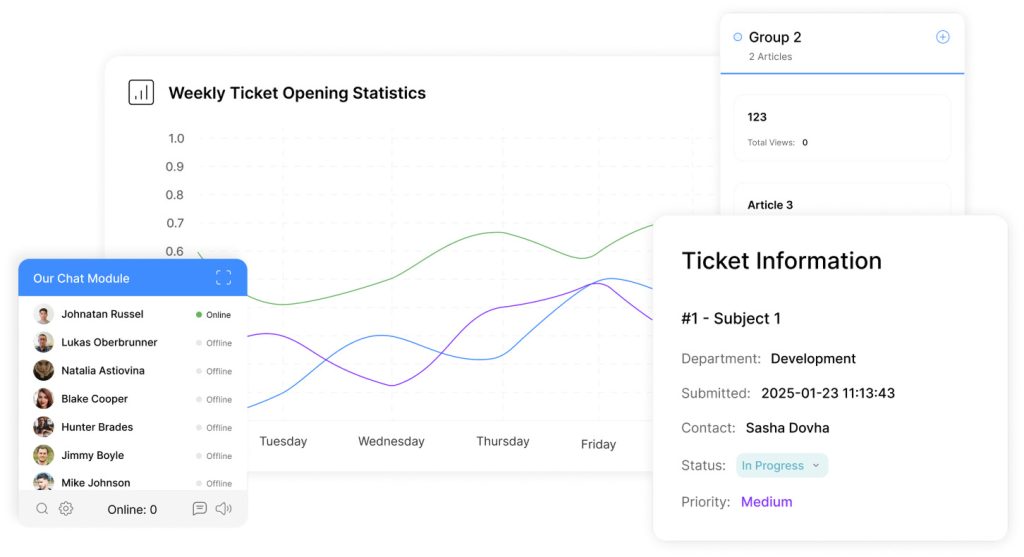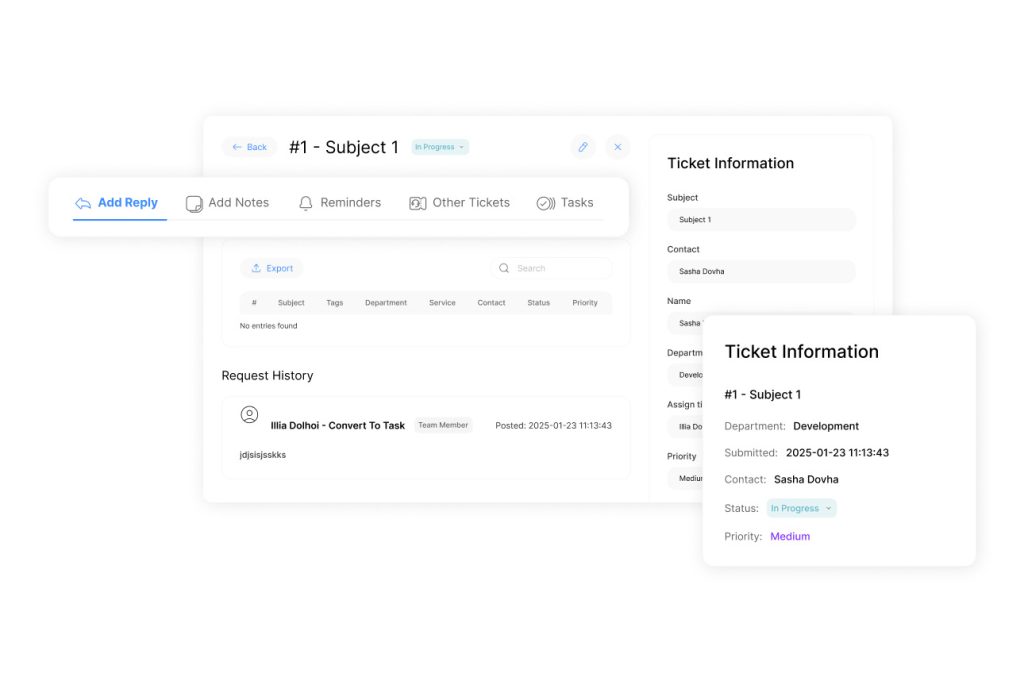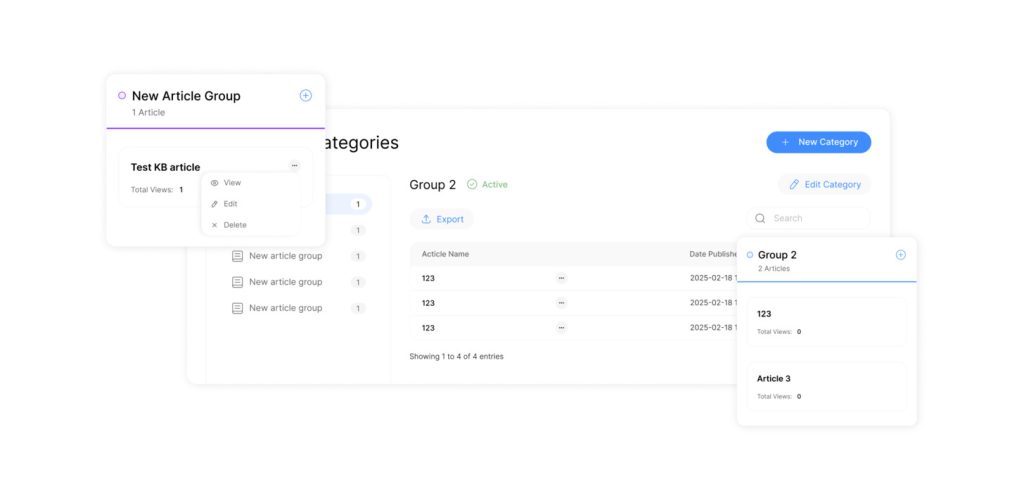Transforming Customer Support Through Intelligent Workflow Solutions

Modern workflow platforms address these challenges by unifying scattered communications. They automatically convert emails and instant messages into trackable cases, eliminating the risk of overlooked inquiries. Advanced systems use AI-driven prioritization to route requests based on urgency, agent expertise, or customer history – ensuring faster resolutions.
These solutions provide real-time visibility into team performance through dashboards showing response times and resolution rates. Collision detection prevents multiple agents from working on identical cases simultaneously. Integrations with CRM software and productivity tools create seamless workflows, reducing context-switching for support staff.
Choosing the right platform directly impacts customer retention and operational costs. Companies using intelligent routing report 30% faster response times and measurable improvements in satisfaction scores. The shift from reactive firefighting to strategic service management allows teams to focus on building relationships rather than chasing messages.
Key Takeaways
- Manual email management fails to scale with business growth, creating service gaps
- Unified platforms prevent duplicate efforts through automated case tracking
- AI prioritization ensures urgent customer needs receive immediate attention
- Performance analytics help teams optimize response strategies continuously
- System integrations reduce workflow disruptions across business tools
- Proper implementation cuts resolution times while boosting satisfaction metrics
Introduction to Multi-Channel Ticket Creation (Email, Chat)
Efficient customer service now demands unified solutions that bridge multiple interaction points seamlessly. Businesses handling high inquiry volumes often struggle with fragmented tools that create delays and inconsistencies. Centralized platforms solve this by merging communication streams into organized workflows.
The Need for Streamlined Customer Support
Traditional approaches crumble under growing demands. Shared inboxes and manual processes lead to missed messages and duplicated efforts. Teams waste hours sorting through disconnected channels instead of resolving issues.
Advanced systems replace chaos with structure. They automatically convert inquiries from various sources into trackable cases. This eliminates confusion while ensuring no request goes unanswered. Integrated platforms reduce resolution times by 40% for many organizations.
Transforming Customer Service Workflows
Modern tools turn reactive operations into strategic assets. AI analyzes incoming requests to assign them based on agent skills or urgency levels. Dashboards display real-time metrics, helping managers optimize team performance.
These systems also connect with existing business apps. This integration builds complete customer profiles, enabling personalized responses. Support staff spend less time switching tools and more time delivering solutions that strengthen client relationships.
Why Unified Communication Systems Transform Support Outcomes

Customers expect seamless interactions regardless of how they reach out. Fragmented tools create friction, while integrated platforms unify conversations into actionable workflows. This shift directly impacts satisfaction metrics and operational agility.
Centralized systems eliminate manual sorting by automatically generating cases from various sources. Response times drop by 40% when teams bypass repetitive routing tasks. Agents access complete interaction histories, enabling personalized resolutions that strengthen loyalty.
| Traditional Approach | Modern Solution | Impact |
|---|---|---|
| Separate tools per channel | Single interface for all requests | 79% faster case assignment |
| Manual priority tagging | AI-driven urgency detection | 62% fewer escalations |
| Channel-specific analytics | Cross-platform reporting | 360° performance insights |
Standardized workflows ensure quality consistency across contact methods. Leaders gain strategic insights through consolidated data, identifying trends that inform process improvements. One retail brand reduced duplicate efforts by 58% after implementing unified analytics.
Automated case tracking prevents overlooked requests, a critical factor in maintaining trust. Teams collaborate more effectively with shared visibility into workloads and expertise matches. These systems turn reactive operations into proactive relationship-building engines.
Essential Features and Tools Overview

Leading customer support platforms separate themselves through advanced capabilities that transform reactive operations into strategic assets. These systems combine precision routing, predictive analytics, and enterprise-grade security to deliver measurable performance gains.
Intelligent Routing and AI-Powered Assistance
Smart assignment algorithms analyze agent expertise and workload to distribute cases efficiently. This ensures specialists handle complex issues while maintaining balanced team capacity. AI tools go beyond basic automation, offering context-aware response suggestions and resolving routine inquiries without human intervention.
Collision detection features maintain service integrity by alerting agents when colleagues already address specific cases. This eliminates redundant efforts that frustrate customers and waste resources. Combined with self-learning prioritization models, these tools reduce escalations by 54% in typical deployments.
Real-Time Analytics and Deep Integrations
Comprehensive dashboards track resolution rates, satisfaction scores, and agent productivity without manual data crunching. Managers identify bottlenecks instantly and adjust workflows dynamically. One logistics company improved first-contact resolution by 37% using live performance insights.
Seamless connections with CRM databases and knowledge repositories give agents full customer context during interactions. Role-based access controls and compliance certifications (SOC 2, GDPR) ensure sensitive data stays protected. These integrations create unified workspaces where teams solve problems faster while maintaining strict security standards.
Reviewing Top Products in the Market
Selecting the right customer support platform requires balancing functionality with operational adaptability. Leading solutions cater to distinct business needs through specialized features and pricing models.
Workflow-First Solutions
Suptask reimagines workflow management by adapting to existing team processes. Its free tier and $7-$13 per agent pricing eliminate context-switching through unified interfaces. This philosophy of flexibility makes it ideal for teams resisting rigid system overhauls.
Zendesk counters with enterprise-grade scalability, serving thousands of large organizations. At $19/agent/month, its decade-proven ecosystem handles massive request volumes. Customization options meet complex compliance needs other ticketing systems can’t address.
Value-Driven Platforms
Freshdesk stands out with free plans for 10 agents, perfect for growing businesses. HubSpot Service Hub bridges customer support and sales through native CRM integration. Salesforce Service Cloud ($25/user/month) connects service interactions with marketing data for complete client profiles.
These platforms demonstrate how modern solutions reduce operational friction. While Intercom ($39/seat/month) excels in proactive engagement, leaders prioritize tools aligning with their team dynamics and growth trajectories. The optimal choice balances immediate needs with future scalability requirements.
Exploring Modern Email Ticketing Systems

Traditional email management crumbles under the weight of growing customer expectations. Disorganized inboxes lead to overlooked requests and inconsistent response quality. Modern email ticketing systems transform this chaos by converting messages into structured workflows with clear ownership and measurable outcomes.
These platforms automatically assign unique identifiers to each inquiry, creating trackable records with status updates and deadlines. One SaaS company reduced resolution times by 43% after implementing such automated categorization. As one support manager noted:
“What used to disappear in inbox noise now follows clear escalation paths.”
| Traditional Email | Ticketing System | Improvement |
|---|---|---|
| Manual sorting | Auto-categorization | 79% faster triage |
| Shared inboxes | Assigned ownership | 62% fewer duplicates |
| Guesswork prioritization | SLA-driven alerts | 51% faster escalations |
Advanced systems analyze incoming patterns to route tickets based on agent expertise. Collaboration tools let teams add internal notes without cluttering customer communications. Real-time dashboards display critical metrics like first-response times and satisfaction trends.
Integration with CRM databases ensures agents access complete customer histories during interactions. This context enables personalized resolutions that strengthen loyalty. Scalable architectures maintain performance standards even when inquiry volumes triple overnight.
These platforms serve as operational backbones across departments – from IT troubleshooting to billing support. By merging automation with human expertise, businesses turn reactive firefighting into strategic relationship-building.
Comparative Analysis of Ticketing Systems
Evaluating modern support solutions reveals critical differences in how platforms align with business needs. Decision-makers must weigh functionality against implementation costs and team dynamics.
Decoding Platform Capabilities Through Data
Feature matrices expose stark contrasts between market leaders. Suptask appeals to collaborative teams with free access and Slack-native workflows, while Zendesk’s $19/agent model targets enterprises needing deep customization. Freshdesk stands out by offering full functionality for 10 users at zero cost.
| Platform | Starting Price | AI Strength | Ideal For |
|---|---|---|---|
| Suptask | Free – $13/agent | Good | Agile teams |
| Zendesk | $19/agent | Excellent | Large corporations |
| Freshdesk | Free | Excellent | Growing SMBs |
AI capabilities separate basic tools from strategic assets. While some systems offer simple auto-replies, others provide predictive routing that cuts escalations by 54%. Pricing models also vary significantly – per-agent fees suit stable teams, while flat rates benefit fluctuating support demands.
Implementation complexity often correlates with feature depth. Enterprise-grade software requires technical resources but delivers infinite customization. Lightweight platforms enable rapid deployment at the cost of advanced functionality. Businesses must match their operational maturity to system requirements.
These comparisons highlight three strategic paths: cost-effective launches, enterprise scalability, or balanced mid-market solutions. The right choice depends on current pain points and anticipated growth trajectories.
The Role of Automation in Ticket Management

Manual processes drain 20% of support teams’ productivity through redundant data entry and case sorting. Intelligent automation tackles this waste by transforming reactive workflows into proactive systems. When implemented strategically, these tools become force multipliers that elevate both agent performance and customer outcomes.
From Mundane Tasks to Strategic Priorities
Basic AI features now handle 45% of routine ticket categorization, freeing agents to focus on complex issues. One telecom company reported 2.8 hours saved daily per employee through automated response suggestions. As their operations director noted:
“Our team shifted from answering password resets to solving network configuration challenges – that’s real value creation.”
Advanced systems analyze historical patterns to predict inquiry types before agents read them. This preemptive sorting reduces resolution times by 33% in organizations using predictive routing. Workflow consistency improves dramatically when automated escalation protocols trigger based on service-level agreements.
Forward-thinking platforms offer self-learning capabilities that adapt to evolving customer needs. While autonomous resolution of common queries delivers immediate efficiency gains, the true advantage lies in scalability. Teams that adopt AI-ready systems today position themselves to leverage emerging technologies seamlessly.
| Automation Level | Time Saved Daily | Impact on CSAT |
|---|---|---|
| Basic categorization | 1.5 hours | +12% |
| Smart routing | 2.2 hours | +18% |
| Full autonomy | 3.1 hours | +24% |
Performance analytics track automation effectiveness across multiple dimensions. Managers gain insights into which processes benefit most from machine intervention, allowing continuous optimization. This data-driven approach helps organizations balance human expertise with technological efficiency.
Deep Dive into Shared Inboxes and Omnichannel Support
Disorganized communication hubs create bottlenecks that frustrate customers and overwhelm teams. Traditional shared inboxes function like digital free-for-alls, where messages disappear into voids and accountability evaporates. Modern solutions transform these chaotic environments into structured command centers.
| Traditional Shared Inbox | Advanced Solution | Improvement |
|---|---|---|
| Unassigned messages | Auto-routed tickets | 83% faster assignments |
| Manual follow-ups | SLA-driven alerts | 47% fewer delays |
| No performance data | Real-time dashboards | 62% better oversight |
Professional platforms add ownership tags and status tracking to every inquiry. Collision detection prevents three agents from answering the same request – a common issue in basic shared inboxes. One SaaS company reduced duplicate responses by 65% using these safeguards.
Omnichannel systems unify conversations from social media, live chat, and phone calls alongside emails. This consolidation lets teams resolve cross-channel issues without switching tools. As a support director noted:
“We cut response gaps by half when all interactions became visible in one workspace.”
Automation handles repetitive tasks like acknowledgment emails and priority tagging. Scalable architectures grow with businesses, maintaining service quality during seasonal spikes. Teams using CRM integrations achieve 31% faster resolutions through complete customer histories.
Strategic implementation turns shared inboxes into growth engines. Analytics identify training needs, while workflow templates standardize best practices. These systems don’t just manage messages – they build competitive advantages through consistent, measurable service excellence.
Integrations with CRM and Knowledge Base Systems

Operational silos crumble when support tools connect with core business systems. Seamless integration between platforms eliminates data gaps that hinder personalized service. Teams using unified solutions report 41% faster access to critical customer information compared to manual lookups.
Enhancing Customer Conversations via CRM Integrations
CRM connections transform support interactions by surfacing purchase histories and past issues automatically. Agents resolve billing disputes 58% faster when financial data appears alongside service requests. Real-time synchronization ensures every team member references the same updated records.
Platforms like Salesforce and HubSpot extend their value through native support integrations. This eliminates duplicate data entry while maintaining compliance standards. Teams using embedded CRM tools achieve 22% higher satisfaction scores through context-aware responses.
Leveraging Knowledge Base Tools for Faster Resolution
Centralized knowledge repositories cut resolution times by empowering both agents and customers. Support systems with integrated search surfaces relevant articles during live interactions. One retailer reduced escalations by 37% after implementing AI-powered solution suggestions.
Regular content updates keep knowledge bases aligned with product changes. Version control features prevent outdated information from reaching customers. These systems become smarter over time, automatically prioritizing frequently referenced troubleshooting guides.
Businesses invested in specific CRM ecosystems should prioritize compatible support platforms. This strategic alignment reduces training time while minimizing errors caused by system hopping. The result? Measurable improvements in both operational efficiency and client retention metrics.

